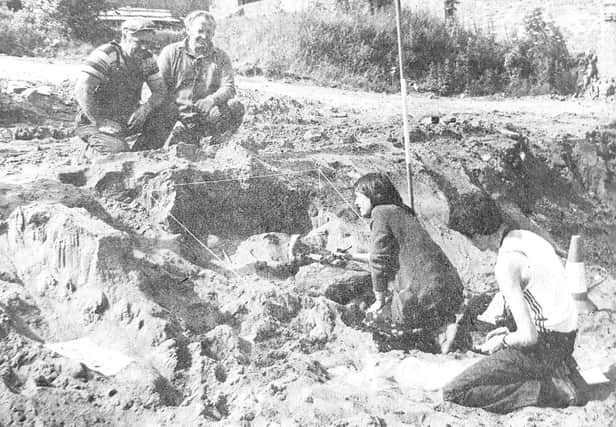Nostalgia: 5000 year old graves found near Kirkcaldy High Street in 1980


A bulldozer driver with Kirkcaldy firm Alex Fraser Builders was busy on excavation operations when he caught sight of some partially buried bones in the sand.
On closer examination he saw the top of a skull and the site foreman immediately contacted Kirkcaldy Museum.
Advertisement
Hide AdAdvertisement
Hide AdThe curator, Andrea Kerr, and her assistant, Jane Glaister, were soon on the scene – the former site of Stahly's, the butchers, and identified the graves as being of the ‘short cist' variety, belonging to the Early Bronze Age circa 3000 BC.
Speaking to the FFP reporter on site, Andrea said: “These graves are sometimes known as ‘dagger graves' because of the weapons found in them.
“They were made by the ‘beaker people', so called because of the decorated beakers and pots found in the graves."
Although no weapons were found, fragments of pottery were discovered next to the bones.
Advertisement
Hide AdAdvertisement
Hide AdJane said: “Kirkcaldy was an important Early Bronze Age stronghold.
"A grave of similar origin was found in Oriel Road in 1931.
“There are only twelve ’dagger graves’ in Scotland so this is an important discovery."
She added: “The round skulls found here indicate that these are the graves of the ‘beaker people’ who emigrated from the Low Countries to Scotland.
“The indigenous Scots of that time had long skulls. Only important members of the clans were buried in such a manner.“
Advertisement
Hide AdAdvertisement
Hide AdThe clustered position of the uncovered bones showed how the ‘Beaker people’ buried their dead in a crouching position.
Jane added: “It's interesting that these graves are found next to a Christian church.
"You usually find that Christian churches were erected close to areas of past religious significance.”
The work of uncovering the graves continued into the night and the bones and pottery fragments were then sent to Glasgow University to be preserved.